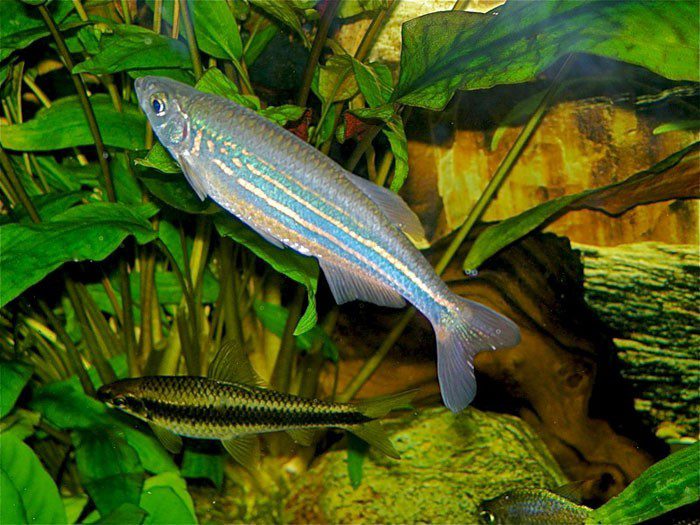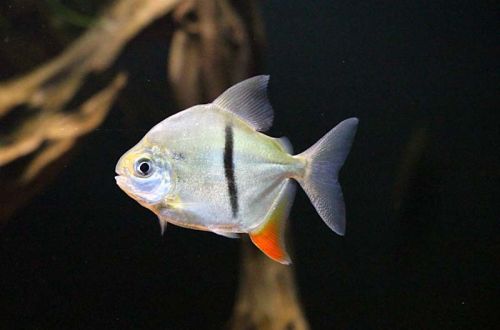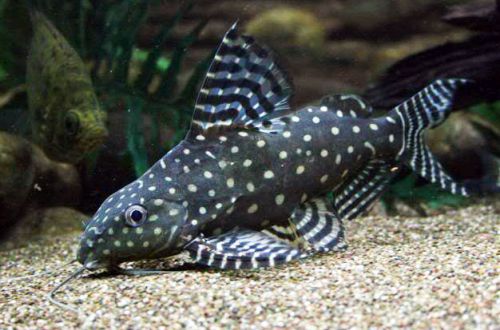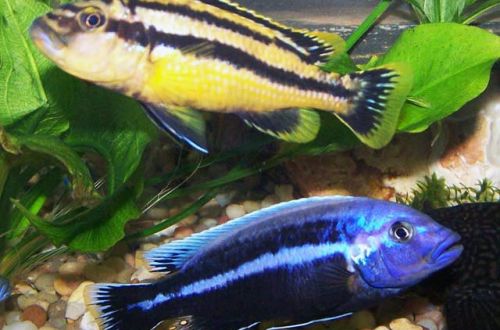
Giant Danio
The giant zebrafish, scientific name Devario aequipinnatus, belongs to the Cyprinidae family. The name quite accurately conveys the description, this species is really larger than its relatives. Thanks to its endurance and unpretentiousness, Danio can become the first fish in your new aquarium and successfully survive the possible mistakes of novice aquarists.

Contents
Habitat
The giant zebrafish was first described by explorer John McClelland in 1839 while studying the fauna of India. The fish is common in northern India, including Nepal, Bangladesh, Sri Lanka, Myanmar and northern Thailand. In nature, these fish live in mid-mountain rivers at an altitude of up to 300 meters above sea level. The rivers have different conditions, but are mainly represented by shaded areas, sometimes with trees hanging directly to the surface of the water. Danio prefers the upper layers of water, eating insects and their larvae.
Requirements and conditions:
- The volume of the aquarium – from 100 liters.
- Temperature – 21-24°C
- Value pH — 6.0–8.0
- Water hardness – soft to medium hard (5-19 GH)
- Substrate type – dark gravel or sand
- Lighting – subdued
- Brackish water – no
- Water movement – strong or moderate
- Size – up to 10 cm.
- Feeding – any food of suitable size
- Life expectancy – from 5 to 7 years
Description

The giant Danio has a large oblong body, small antennae are noticeable at the mouth at the end of each lip. It has the largest size among representatives of related species, in the wild it reaches a length of about 15 cm, although in the aquarium it rarely exceeds 10 cm. in the form of stripes and dots of irregular shape of yellow or greenish pigment. This species also has albino forms, as a rule, this is the result of a random mutation that is not fixed in other generations.
Outwardly, it resembles the Malabar and Royal Danio, which is why they are often confused.
Food
This species belongs to omnivorous fish with pleasure accepting dry, live or frozen food. An important condition is that it must float near the surface. Unlike most other omnivores, Danio does not require a variety of diets, it is allowed to feed with any one type of food.
Maintenance and care
Clean water, its timely renewal, weekly at least 25% of the total volume, and enough space for swimming, these are the small set of conditions necessary for the successful maintenance of the Giant Danio. The fish is sensitive to the oxygen content in the water, so water aeration should be provided using compressors or universal filters, the latter allow you to create an artificial weak current, which is welcome. Lighting is moderate. Since the fish do not require high water temperatures, a heater may not be necessary if the room temperature is sufficient. The design should provide for thickets of plants in some corner of the aquarium or at the side wall, where, if necessary, fish will hide. Floating plants provide additional shade. The soil is dark, consisting of smooth fine gravel or coarse sand.
Behavior and Compatibility
An active and peaceful schooling species, needs a community of at least 8 individuals, if the number is smaller, the fish begins to behave restlessly, attack others, pursue smaller neighbors, but this behavior is not a manifestation of aggression, Danio is looking for partners to play. Joint keeping is allowed with fish of similar size and temperament.
Breeding / breeding
Males, in contrast to females, are noticeably slimmer with more intense coloration. Breeding in a home aquarium is not difficult. They become sexually mature at a body length of 7 cm. Two fish are able to keep their couple all their lives, but this does not affect their parental feelings in any way. After spawning, future offspring becomes left to itself.
Breeding should be carried out in a separate tank, the bottom of which is densely planted with small plants, a substrate of gravel with particles with a diameter of about 1 cm, this will subsequently protect the eggs from being eaten. The female is added to the aquarium a day before the male, when the pair connect, the temperature should be gradually increased to 27-28 ° C, which starts the courtship process. If conditions are favorable, after each mating, the female releases 5-20 eggs directly into the water, and the male fertilizes them, about 300 eggs will be released in total. At the end of spawning, the parents are placed back in the common aquarium.
More about breeding Danio
Diseases
Under favorable conditions, fish are not susceptible to disease, but habitat changes can provoke outbreaks of diseases, primarily ichthyophthiriosis. For more information on symptoms and treatment methods, see the Fish Diseases section.





